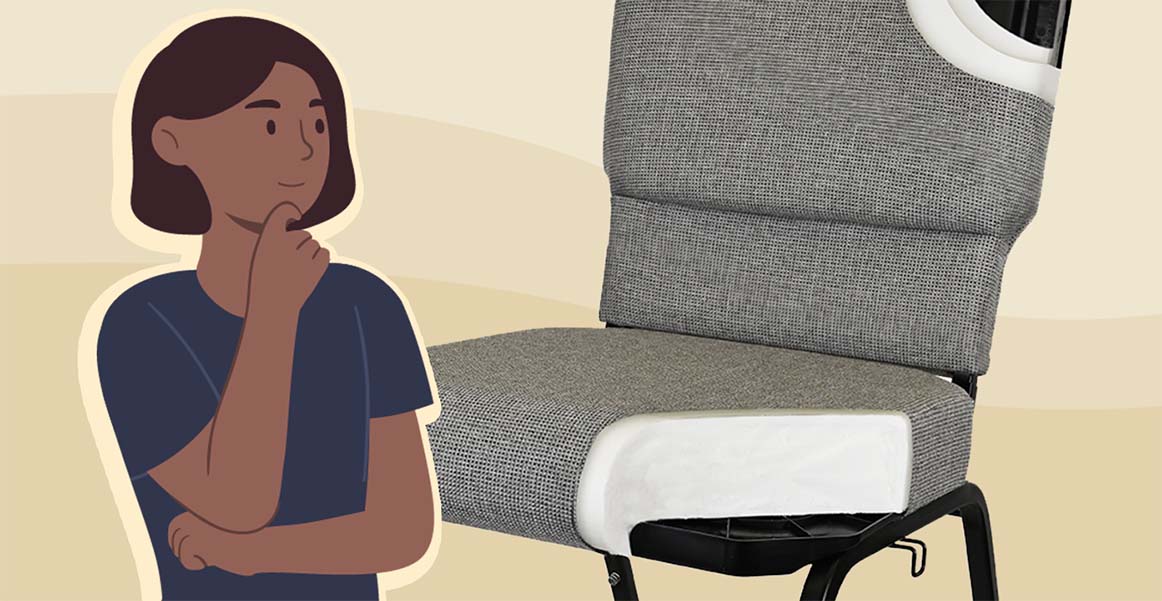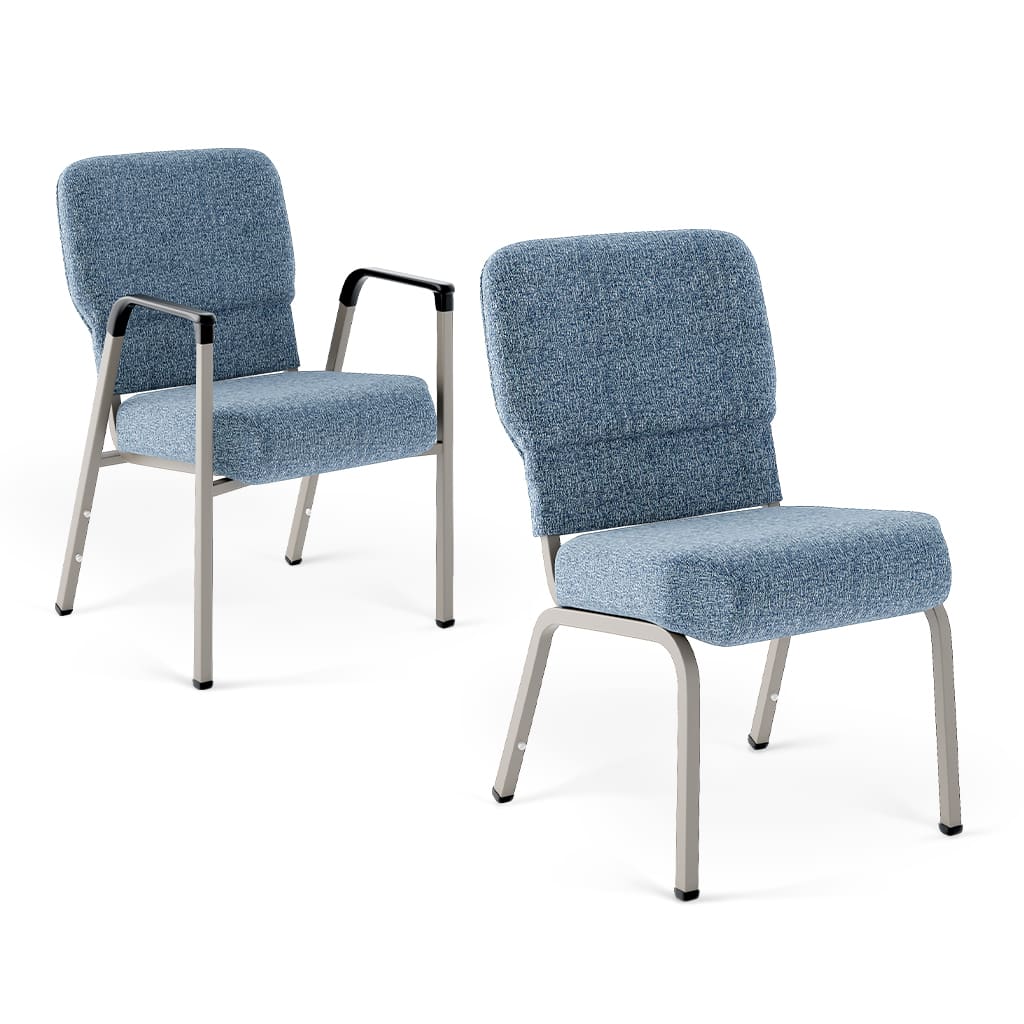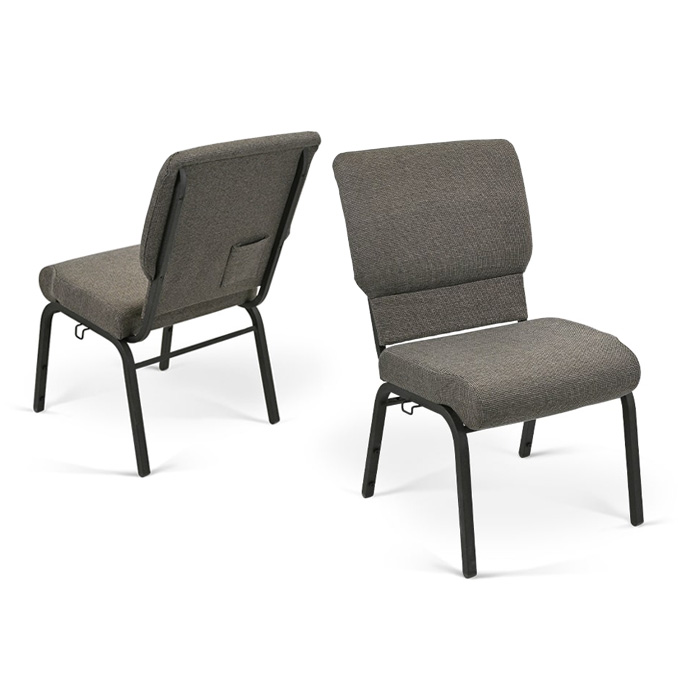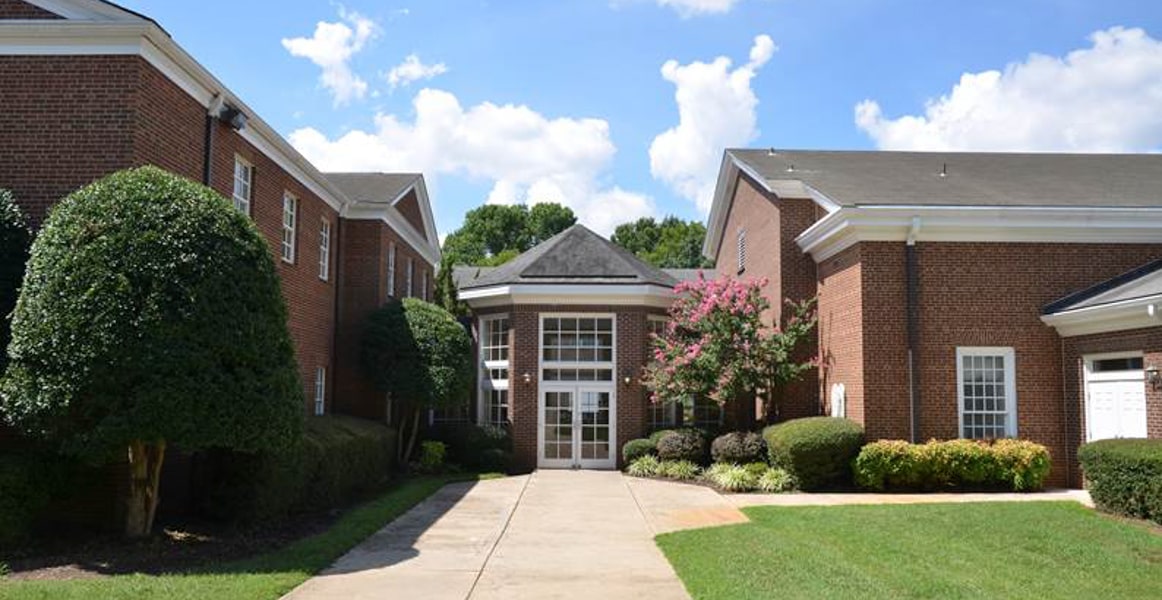Beim Einkauf für kirchenstühle, man kann sich leicht in Stoffmustern und Rahmenoberflächen verlieren und das Innere des Stuhls vergessen. Während das Äußere eines Stuhls das Aussehen Ihres Andachtsraums prägt, bestimmt das Innere, wie bequem die Stühle sind und wie lange sie halten.
Möchten Sie den wirklichen Unterschied zwischen einem Stuhl, der 3 Jahre hält, und einem, der Ihrer Gemeinde 20 Jahre lang dient, erfahren? Es kommt auf die Verarbeitungsqualität im Inneren des Stuhls an – insbesondere bei Sitzfläche, Schaumstoff, Rahmen und Schweißnähten.
Hier sind vier versteckte Dinge über einen Kirchenstuhl, die Kirchenführer und Beschaffungsteams recherchieren sollten, bevor sie in Kirchenstühle investieren.
1. Sitzfläche: Auf das Material kommt es an
Die Sitzfläche ist die Grundlage für Komfort und Langlebigkeit. Praktisch gesehen kann man sich die Sitzfläche als die Federung unter dem Kissen vorstellen. Sie kann aus einem einfachen Stück Holz oder aus einer bequemeren und flexibleren Kunststoffausführung bestehen.
Der Unterschied zwischen den verschiedenen Sitzflächen wird deutlicher, wenn man sein Sofa zu Hause mit einer hölzernen Kirchenbank mit Polsterkissen vergleicht. Sitzt man lange genug auf der Kirchenbank, spürt man die harte Holzbank unter dem Polster, da sich das Polster zusammendrückt. Ein Sofa hingegen bleibt stundenlang weich und bequem, da es keine harte Sitzfläche gibt, in die man einsinken könnte. Das liegt daran, dass ein hochwertiges Sofa eine gefederte Sitzfläche aus Federn oder Polstergurten hat, die für eine Flexibilität sorgt, die im starken Kontrast zur Holzbank steht. Selbst mit einem hochwertigen Polster auf der Holzbank wird diese aufgrund der harten Holzsitzfläche nach einiger Zeit unbequem.
Arten von Stuhlbasen und Komfortbewertungen
- Spanplatte: (Niedriges Budget, geringer Komfort)
Die günstigsten Sitzflächen bestehen aus Spanplatten, Faserplatten, MDF, Holzwerkstoff oder Spanplatten. Spanplatten werden oft mit Discountern und Studentenwohnheimmöbeln in Verbindung gebracht, die eine Lebensdauer von drei bis fünf Jahren haben sollen. Eine Sitzfläche aus Spanplatten kann bruch- und verrottungsanfällig sein, insbesondere in feuchten oder stark frequentierten Umgebungen. Schrauben können sich lösen und die Schraubenlöcher leicht ausfransen, was zum Zerfallen des Stuhls führen kann. Sobald eine Spanplattensitzfläche Risse bekommt oder im Bereich der Schrauben zu bröckeln beginnt, verliert sie an Struktur, Sicherheit und Komfort. - Sitzfläche aus Sperrholz: (Standard, niedriger bis mittlerer Komfort)
Mehrschichtiges Sperrholz ist stabiler als Spanplatten und widerstandsfähiger gegen Risse, Verformungen und Durchhängen. Es bietet sicheren Halt für Schrauben und hält dem wiederholten Druck sitzender Gäste stand. Allerdings fühlen sich Sitzflächen aus Sperrholz trotz weicher Polsterung fest und unbequem an. - Geformte, flexible Kunststoff-Sitzfläche: (Premium-Option, höchster Komfort)
Bertolini Impressionen Stühle verfügen über eine speziell entwickelte, geformte Kunststoff-Sitzfläche, die sich bei Belastung dehnt. Dadurch passt sich die Sitzfläche der Körperform an und bietet gleichzeitig ausreichend Halt und Haltbarkeit für den gewerblichen Einsatz.
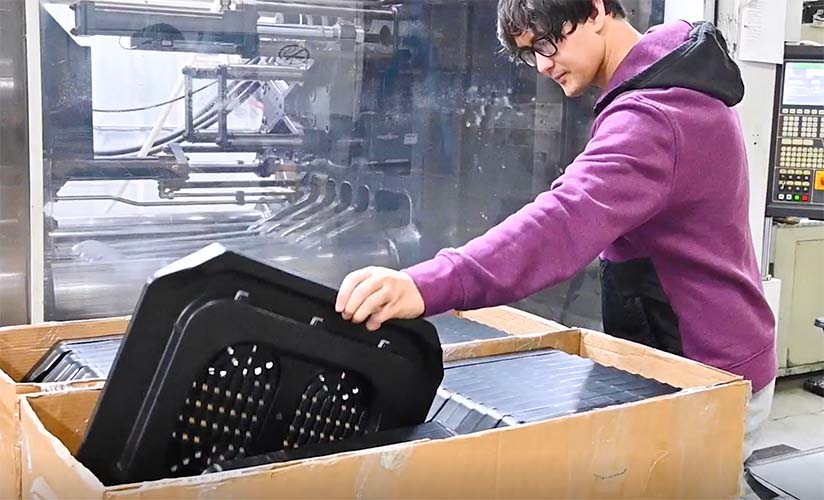
2. Schaumstoffart: Komfort heute vs. Langlebigkeit morgen
Die meisten Polsterschäume sind anfangs weich, aber die Kunst besteht darin, einen Schaumstoff zu finden, der seine Flexibilität und Weichheit über die Zeit behält. Minderwertiger Schaumstoff bricht auseinander, verklumpt oder wird flach – oft schon ein oder zwei Jahre nach dem Kauf. Bei Schaumstoff kommt man nicht umhin, das zu bekommen, wofür man bezahlt.
- Schaumstoff mit geringer Dichte (geringe Haltbarkeit, geringer Komfort)
Diese Art von Schaumstoff fühlt sich zunächst weich und matschig an, bricht aber schnell zusammen. Stühle aus Schaumstoff mit geringer Dichte fühlen sich vielleicht ein paar Monate lang gut an, entwickeln aber bald harte Stellen, eine ungleichmäßige Polsterung und ein klumpiges Gefühl, das das Gottesdiensterlebnis beeinträchtigt. - Hochelastischer Schaumstoff (Standardhaltbarkeit, durchschnittlicher Komfort)
Diese Art von Schaumstoff ist von guter Qualität und behält über viele Jahre hinweg seine Form und Stützkraft. Er verformt sich nicht und verformt sich nicht, selbst bei langen Gottesdiensten oder Veranstaltungen. - Kaltgehärteter, hochelastischer Schaumstoff (höchste Haltbarkeit, höchster Komfort)
Dieser Schaumstoff, der häufig in höherwertigen Modellen zu finden ist, ist geformt und extrem langlebig und behält seine Elastizität über Jahre hinweg. Er ist ideal für Kirchenstühle, da diese Art von Schaumstoff 20 Jahre oder länger hält – länger als die meisten Stoffe.
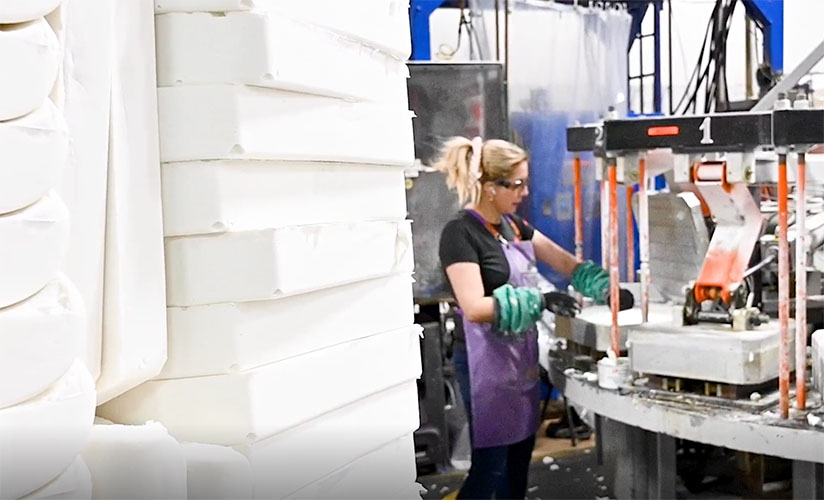
3. Geschweißter Rahmen vs. Schraubmontage
Der Rahmen ist das verborgene Rückgrat des Stuhls.
- Geschraubte/verschraubte Rahmen (geringe Qualität, geringe Haltbarkeit)
Bei billigeren Stühlen werden an den Verbindungsstellen häufig Schrauben oder Bolzen verwendet. Diese können sich mit der Zeit und durch Gebrauch lösen, was dazu führen kann, dass die Stühle wackeln und möglicherweise sogar auseinanderfallen, was ein Sicherheitsrisiko darstellt. - Geschweißter Stahlrahmen (Beste Qualität, höchste Haltbarkeit)
Nahtlose Schweißnähte auf dickem Stahl bieten unübertroffene Festigkeit und verringern das Risiko, dass sich die Schweißnähte mit der Zeit lösen. Achten Sie auf Stahl mit einer Stärke von 16 oder stärker.
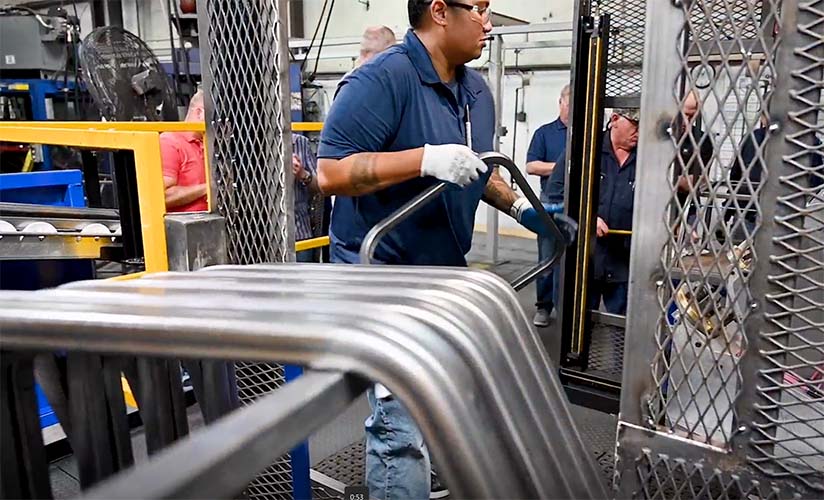
4. Befestigungen, Gleiter und Unterkonstruktion
Kleine Komponenten haben großen Einfluss auf die Qualität und Haltbarkeit Ihres Stuhls. So ist es beispielsweise wichtig, Stühle mit hochwertigen Bodengleitern zu kaufen, damit Ihre Kirchenstühle weder den Boden zerkratzen noch den Teppich beschädigen.
- Bodengleiter & Bodenschoner: Hochwertige Gleiter verhindern Bodenschäden und reduzieren den Lärm in Ihrem Kirchenschiff. Billige Bodengleiter aus Kunststoff können reißen oder vorzeitig abfallen. Achten Sie auf leicht austauschbare Gleiter aus Metall oder Kunstharz, damit Sie sie auch bei Verschleiß nachbestellen und ersetzen können.
- Untersitzverstrebung: Verstärkte Querstreben oder Stützschienen erhöhen die Gewichtstoleranz und Stabilität eines Stuhls. Dies ist in Mehrzweckräumen wichtig, in denen Stühle häufig bewegt, gestapelt und gelagert werden.
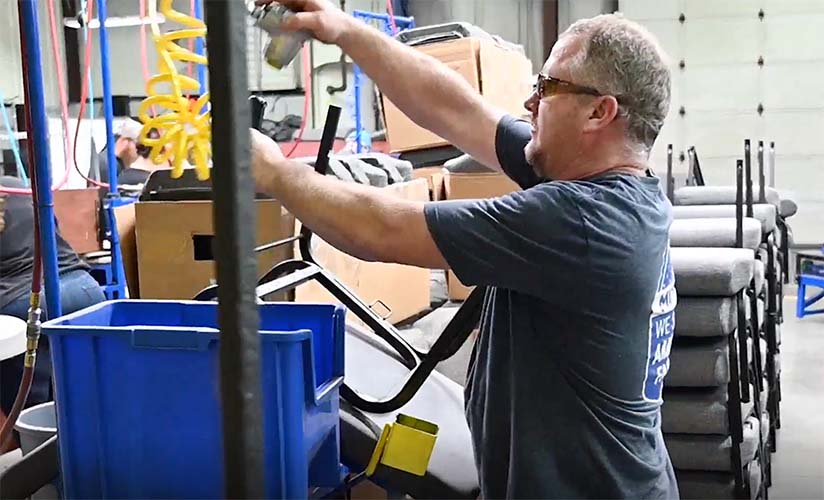
Das Fazit für Kirchen
Günstige Stühle mögen zwar auf den ersten Blick ansprechend aussehen, ihre Lebensdauer ist jedoch oft kurz – und ihre tatsächlichen Kosten summieren sich mit der Zeit. Stühle mit einer langlebigen Konstruktion und hochwertiger Innenkonstruktion bieten auf lange Sicht einen höheren Wert.
Warum Kirchenstühle von Bertolini?
- Längere Lebensdauer (10+ Jahre)
- Besserer Komforterhalt
- Geringere Wartungs- und Ersatzteilkosten
- Verbessertes Erlebnis für Gemeindemitglieder und Gäste
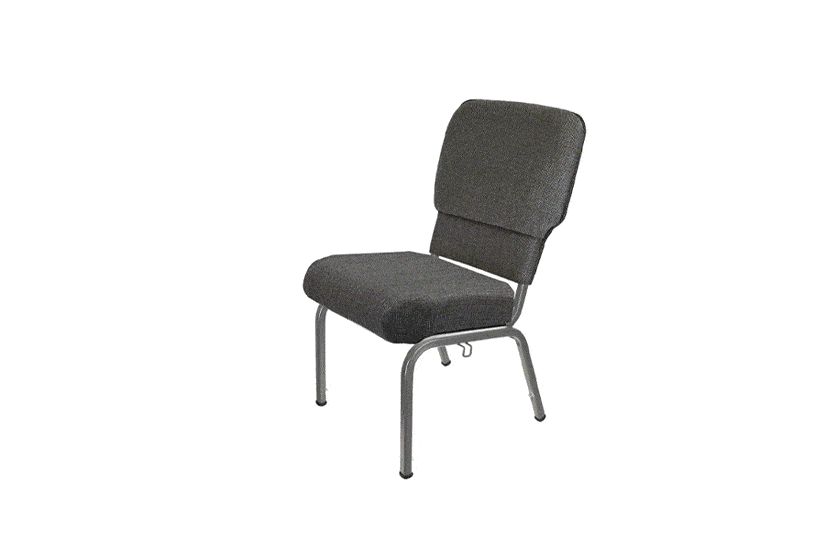
Abschließende Gedanken
Sie sehen den Unterschied zwischen hochwertigen und minderwertigen Stühlen vielleicht nicht auf den ersten Blick, aber Ihre Gemeinde wird ihn nach einigen Jahren spüren. Stühle mit solider Konstruktion halten dem täglichen Gebrauch, besonderen Anlässen und gestapelter Lagerung stand. Sie halten länger und sind bequemer als billige Stühle. Bei einem hochwertigen Stuhl bleibt das Sitzkissen viele Jahre lang bequem, während billige Stuhlkissen schnell flach werden und ihren Komfort verlieren. Auch Kleinigkeiten wie Bodengleiter können einen großen Unterschied machen, da minderwertige Gleiter schnell durchscheuern oder abfallen und Ihren Bodenbelag beschädigen.
Für viele Kirchen ist der Kauf hochwertigerer Kirchenstühle wie Bertolini eine kluge Entscheidung. Auf diese Weise investieren Sie in Sitzmöbel, die einen langfristigen Wert bieten und Ihrer Gemeinde viele Jahre lang gute Dienste leisten.
